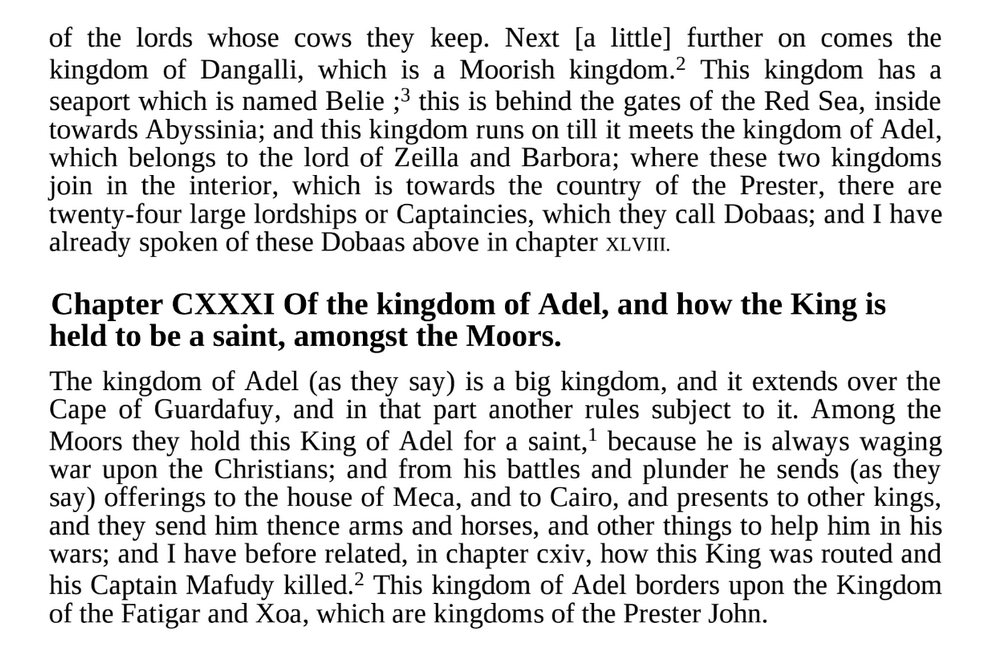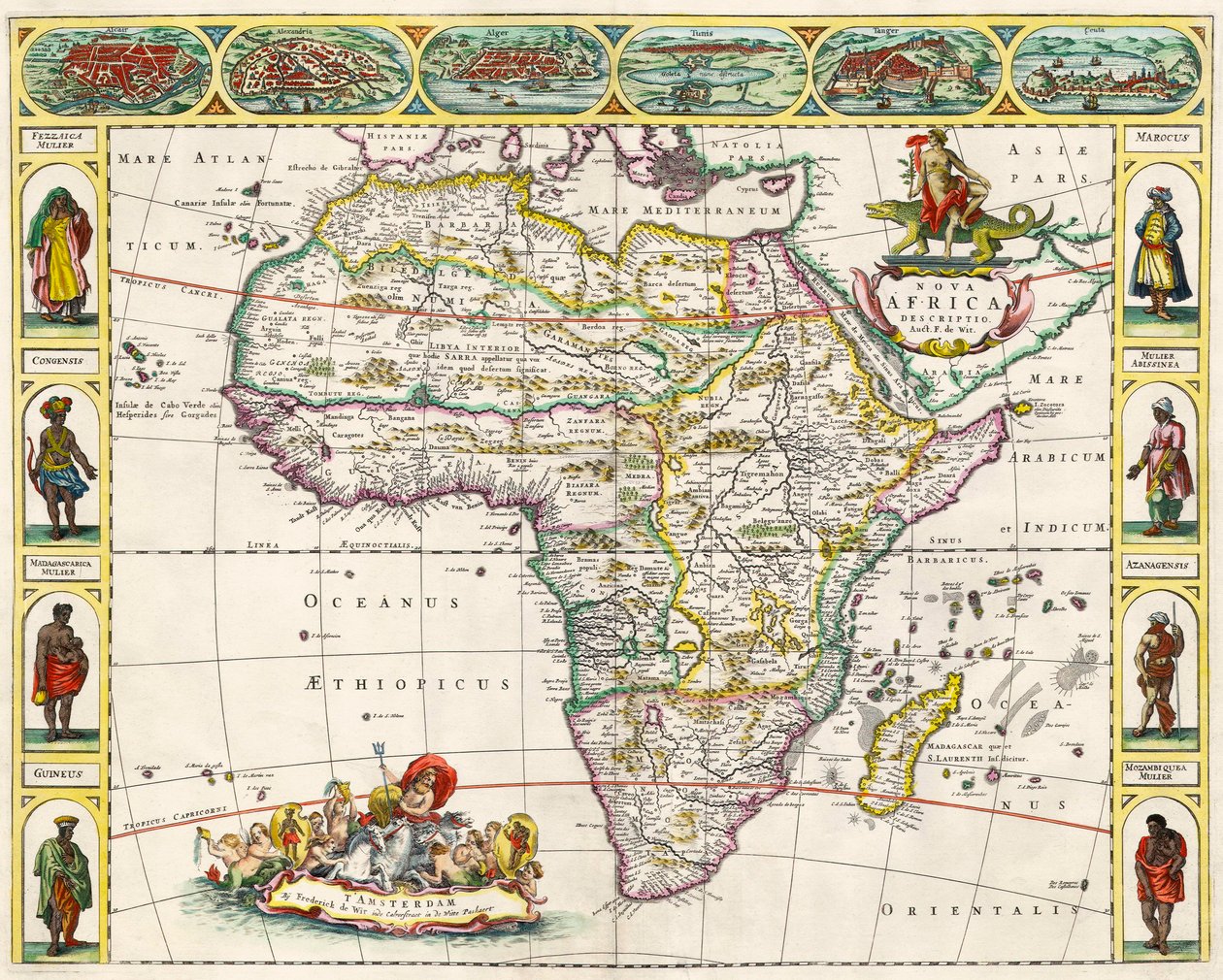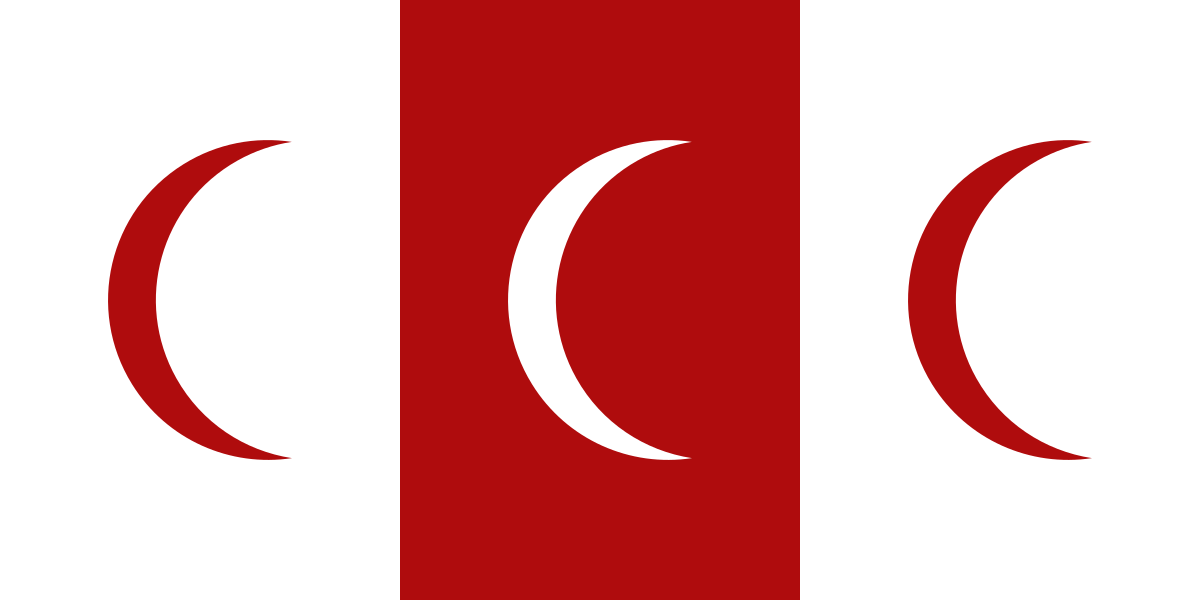You are using an out of date browser. It may not display this or other websites correctly.
You should upgrade or use an alternative browser.
You should upgrade or use an alternative browser.
Accurate Adal Sultanate map
- Thread starter werefinshed
- Start date
Garaad Awal
Former African
Proud Adalite 

I decided to check out that guy's history blog and came across this BS

 www.africanhistoryextra.com
www.africanhistoryextra.com
He claims Barawe was a Swahili city, the nerve of these people trying to steal out history


The complete history of Brava (Barawa) ca. 1000-1900: a Swahili enclave in southern Somalia
Tucked along the southern coast of Somalia, the old city of Brava preserves the remains of a once bustling cosmopolitan enclave whose influence features prominently in the history of the East African coast. Located more than 500 km north of the Swahili heartland, Brava retained a unique urban...
He claims Barawe was a Swahili city, the nerve of these people trying to steal out history

The alchemist
VIP
Abyssinia was a highly slave-driven society and you can read accounts of Abyssinian savages raiding families of women and children, pilling up dead elderly and men while taking the young and women as slaves in regions they did not have jurisdiction while taxing the entire Oromo region that they controlled to such a degree people could barely subsist.
One of the early expeditions found that villages were empty for that reason - this was the mid/late 19th century. I know one Habash person who said his grandfather owned 100s of slaves, elaborating how Ethiopia accepted slavery with no issue.








One of the early expeditions found that villages were empty for that reason - this was the mid/late 19th century. I know one Habash person who said his grandfather owned 100s of slaves, elaborating how Ethiopia accepted slavery with no issue.
That bs map, u know it, why u taking source from guy who said merca and barawe are swahili, he literally hates somalis
This was the guy i was beefing who claiming Banadir cities like Barawa, Mogadishu ect. Were swahiliI thought Adal was in Southern Somalia?
This twitter “historian” hates somalis and groups us with ethiopians.
Someone stand on business or start a Somali history blog, i’m tired
View attachment 322832x.com
x.com
The alchemist
VIP
They were savage in every sense of the word:
I wrote a long text earlier tying the anti-slavery movement of the West and how it was a colonial mechanism. But here it is highlighted how the guy, a clear supporter of colonialism for economic reasons, traveled to Abyssinia and was so horrified that he thought something had to be done with it -- uniquely -- that he did not mention other places as needing to be taken over, among Somalis, for example. Menelik actively encouraged and colluded with the colonialists to come and subjugate all the areas except his to get a share or at least let it be taken so Somalis could lose their lands. Yet, here this Westerner thought that Menelik should have been removed because of the brutal savagery he imposed:
This man claimed of all the brutalities, the Abyssinians were the most brutal of them all. This says a lot because Westerners were biased in favor of Christian Abyssinia, and not the Muslims. In light of that strong bias, this guy still thought them a force of evil to the region.
It's quite funny when historical books frame the medieval conflict between the Abyssinians and the Muslims as Islamic aggression when the aggressive people who dealt in savagery and oppressive hateful means were none other than those Abyssinians. That is why there was so much conflict. Those people could not keep to their lands and expanded upon a region they had no business in. We see here very late in history what they did to random miskeen people who could not fend for themselves.
Absolute savages.Abyssinia was a highly slave-driven society and you can read accounts of Abyssinian savages raiding families of women and children, pilling up dead elderly and men while taking the young and women as slaves in regions they did not have jurisdiction while taxing the entire Oromo region that they controlled to such a degree people could barely subsist.
One of the early expeditions found that villages were empty for that reason - this was the mid/late 19th century. I know one Habash person who said his grandfather owned 100s of slaves, elaborating how Ethiopia accepted slavery with no issue.
View attachment 322837
View attachment 322838
View attachment 322839
View attachment 322840
View attachment 322841
View attachment 322842
View attachment 322843
View attachment 322844

The 16th century Olfert Dapper highlighted that Adal stretched from Suakin in Sudan to Somalia’s Indian Ocean, and based it on two earlier sources from the ground, so this map is just one of many recent attempts to diminish Adal’s size and erase its paramount relationship with Somalia and Somalis. I wouldn’t pay this pseudo-historian any mind, he has a personal dislike for the Somali people and is the Africanist equivalent of the white supremacists that placed Arabs and light-skinned groups at the centre of any great African civilisation.
The fact that he blocks anyone that counters his pseudo-history is evidence that he can’t defend his agenda-driven propaganda. It’s just an echo-chamber.
The fact that he blocks anyone that counters his pseudo-history is evidence that he can’t defend his agenda-driven propaganda. It’s just an echo-chamber.
The alchemist
VIP
I have seen too many of these Twitter substack individuals. The lack of rigor is tantamount to think-pieces posturing as a well-thought-out, educated historical qualitative dissemination.
Furthermore, the Abyssinian map was wrong there. It should also distinguish vassalages and real territory. And between claimed territory and what is within its legal influence. When you define those, a lot of lies will be eliminated. Abyssinia-proper was much smaller -- its largest expansion was very historically recent.
The Muslim region Adal or the other names for it, was larger and extended more eastward and had more influence westward, as well, despite the more Western regions having more independent Muslim chiefships, if I recall correctly.
I bet when some more accurate mapping is defined in the future, we will see much of the propaganda break down. People are taking advantage of improper historical work plus the fabrications of the texts written down by Abyssinians who always justified their own acts whenever they could, compromising the reliability of their texts as honest actors.
The Abyssinians since the early medieval days, quite contrary to all the evidence, claimed that the entire Horn of Africa was theirs, attempting to put natural justification for invasions and territorial control by expanding to foreign lands. The legacy of that exists in the Western predominant historical body as it defines all that takes place through a very presentist manner, where the concept of the modern region of Ethiopia had an existence, before it had existed, defining the landscape of the medieval to ancient past as if it was a coherent territory before it ever was. It defines completely separate civilizations as if they were internal Ethiopian civil-war-like historical conflicts. Down to the early "modern" era, the Abyssinian kings laid claims on lands all the Somali territories all the way to Mogadishu. The legacy of that audacity existed and it does today, still.
Furthermore, the Abyssinian map was wrong there. It should also distinguish vassalages and real territory. And between claimed territory and what is within its legal influence. When you define those, a lot of lies will be eliminated. Abyssinia-proper was much smaller -- its largest expansion was very historically recent.
The Muslim region Adal or the other names for it, was larger and extended more eastward and had more influence westward, as well, despite the more Western regions having more independent Muslim chiefships, if I recall correctly.
I bet when some more accurate mapping is defined in the future, we will see much of the propaganda break down. People are taking advantage of improper historical work plus the fabrications of the texts written down by Abyssinians who always justified their own acts whenever they could, compromising the reliability of their texts as honest actors.
The Abyssinians since the early medieval days, quite contrary to all the evidence, claimed that the entire Horn of Africa was theirs, attempting to put natural justification for invasions and territorial control by expanding to foreign lands. The legacy of that exists in the Western predominant historical body as it defines all that takes place through a very presentist manner, where the concept of the modern region of Ethiopia had an existence, before it had existed, defining the landscape of the medieval to ancient past as if it was a coherent territory before it ever was. It defines completely separate civilizations as if they were internal Ethiopian civil-war-like historical conflicts. Down to the early "modern" era, the Abyssinian kings laid claims on lands all the Somali territories all the way to Mogadishu. The legacy of that audacity existed and it does today, still.
The fact that he is not even Swahili makes it even more hotepryThis was the guy i was beefing who claiming Banadir cities like Barawa, Mogadishu ect. Were swahili
I'm blocked by him after dunking on him a few times
Are you stupid?I thought Adal was in Southern Somalia?
Idilinaa
VIP
Not accurate at all. At least consult direct primary sources on that period if you are going to make maps out of it.
Awdal was not in Southern Somalia (No idea where OP got that from) and was not confined to that location shown in that map he posted.
It extended from the Djibouti-Zeila corridor to and over Cape Guardafui (Bari-Nugaal) Vassal and in the interior past Harar until it reached the Hawash/Showa river/plateu.
Portuguese description on Awdal's territory in year 1520:

Same is shown in internal/external Arabic sources, in fact the Arabic sources even taking a further and describing interior towns connecting it to the wider polity.
Heck even maps like these made a century after is more accurate:
Awdal was not in Southern Somalia (No idea where OP got that from) and was not confined to that location shown in that map he posted.
It extended from the Djibouti-Zeila corridor to and over Cape Guardafui (Bari-Nugaal) Vassal and in the interior past Harar until it reached the Hawash/Showa river/plateu.
Portuguese description on Awdal's territory in year 1520:

Same is shown in internal/external Arabic sources, in fact the Arabic sources even taking a further and describing interior towns connecting it to the wider polity.
Heck even maps like these made a century after is more accurate:

Idilinaa
VIP
He is not too far off here in so far as the town of Barawa had connections to the Northern Swahili coast. That did not mean Barawa was a Swahili enclave at all which is stretching the truth.
Barawa was plainly a Somali town, inhabited in majority parts by Tunnis alongside two other main groups. There was no swahili/bantu segment in the population. Although the town was bilingual in Tunni Somali and Swahili/Chimwini. It was structured and governed much like other Somali towns which differentiated it from the Swahili towns south from it
According to medieval writers and geographers The Swahili Coast was seperated from The Somali coast as Zanj and Barbar. Anything south of Barawa was Zanj(Swahili) and anything North of it was Barbar(Somali). They wrote about Barawa most times in connection with Merka and Mogadishu with same administrative set up and cultural demographic.
Also Chiminii was not restricted to a small isolated Bravanese community, it was adopted and spoken by the Somali Tunni clan who lived inside the town and was kept alive by them.
Some info shared on a seperate thread:
Most of the people that spoke Chimwini and the ones that adopted the language were the Urban Tunni people. They not only spoke the language inside the city but also composed a lot of the literature within it and the Tunni were the large bulk of the urban inhabitants, were politically, religiously and economically dominant.
Some excerpts from the research book that uses information from the Barawi Qadi town records from the 1800's: Translocal Connections across the Indian Ocean: Swahili Speaking Networks
The towns and It's inhabitants.
In the last decade of the nineteenth century Barava hosted within its walls a mixed population divided into different groups and clans. The Somali presence in town was conspicuous: out of the 5000 inhabitants, over 2000 belonged to the five sub-clans of the Tunni (called the Shan gamas). These lived in Brava togerther with two other main groups of city dwellers, the Hatimi and Bida, both claiming Arab ancestry, who collectively called themselves ''Waantu wa Miini or ''People of Brava'' and formed the waungwana urban class
These Tunnis, who lived permanently in the town, had been fully urbanized for several generations, acquiring in the course of time the typical outlook, garb and pursuits of city dwellers.
By the nineteenth century Brava was governed internally by a council of seven elders (called Toddoba Tol, i.e. “seven lineages” in Somali), five representing the groups of the Tunni and the other two the Hatimi and the Bida. The preponderance of Somali members in the governing council reflected not so much the number of Tunni living in the town
Most important part:
Two factors, in particular, highlight the urbanized Tunni's sense of belonging to Brava: before the Italian authorities ordered the judges to record the clan and sub-clan of the parties of each legal case, in some acts the parties described themselves simply as ''Somalis of Brava''.The second factor was that most urbanized Tunni learnt to speak the local Bantu dialect, so much so that in the early twentieth century Nurbin Haji Abdulqadir bin Abdio Hassan (popularly known as Mallim Nuri) of the Tunni Dafaradhi clan, became one of the most prolific writers of poetry chimiini
This is why the Chimwini language is just riddled with Somali influences, large borrowings from phonetics, grammar and vocabulary because it was mostly spoken by Somalis living inside the city:
More interesting still is the influence of Somali,69 which can be seen at different levels.
What's different about Barawa and Tunni's is that Barawa is a far southern town and it has strong trade ties to the Swahili coast south of them. The Somali groups that live there historically like Tunni/Garre have been spread out to cover the areas from Southern Somalia down to lake turkana and came in cultural-contact with a number of Northern Swahili speech communities who were migrating north. They left behind their cultural imprints and remnant groups in form of Boni and Rendille.
That's what sets them and the town apart from say Merka and Mogadishu whose urban population speak only a coastal Somali dialect. Because they don't have strong contact or trade tries with the Swahili coast or Swahili speakers.
Some more information on how medieval geographical writings corroborate and support oral Tunni tradition about their settlement:

About the towns bilingualism and Somali influences in Chimiini:

Some examples of Somali influences from the same book i showed earlier:

Aside from this, the town and Brawa society itself is organized and divided into Somali clan structure of qabil and lineages ''reer'' they call it ''reeri'' and Guurti(council of clan elders), which can be seen in Todobo Tol ''Seven Lineages'' that govern the town.
Last edited:
Barawani had great clout in Muslim East Africa as well. Dar as Salaam in Tanzania was founded by them and until the riots of the 60s there was a Somali quarter in the city.He is not too far off here in so far as the town of Barawa had connections to the Northern Swahili coast. That did not mean Barawa was a Swahili enclave at all which is stretching the truth.
Barawa was plainly a Somali town, inhabited in majority parts by Tunnis alongside two other main groups. There was no swahili/bantu segment in the population. Although the town was bilingual in Tunni Somali and Swahili/Chimwini. It was structured and governed much like other Somali towns which differentiated it from the Swahili towns south from it
According to medieval writers and geographers The Swahili Coast was seperated from The Somali coast as Zanj and Barbar. Anything south of Barawa was Zanj(Swahili) and anything North of it was Barbar(Somali). They wrote about Barawa most times in connection with Merka and Mogadishu with same administrative set up and cultural demographic.
Also Chiminii was not restricted to a small Bravanese community, it was adopted and spoken by the Somali Tunni clan who lived inside the town and was kept alive by them.
Some info shared on a seperate thread:
Idilinaa
VIP
View attachment 322846
View attachment 322847
View attachment 322849
View attachment 322850
They were savage in every sense of the word:
View attachment 322851
I wrote a long text earlier tying the anti-slavery movement of the West and how it was a colonial mechanism. But here it is highlighted how the guy, a clear supporter of colonialism for economic reasons, traveled to Abyssinia and was so horrified that he thought something had to be done with it -- uniquely -- that he did not mention other places as needing to be taken over, among Somalis, for example. Menelik actively encouraged and colluded with the colonialists to come and subjugate all the areas except his to get a share or at least let it be taken so Somalis could lose their lands. Yet, here this Westerner thought that Menelik should have been removed because of the brutal savagery he imposed:
View attachment 322852
This man claimed of all the brutalities, the Abyssinians were the most brutal of them all. This says a lot because Westerners were biased in favor of Christian Abyssinia, and not the Muslims. In light of that strong bias, this guy still thought them a force of evil to the region.
It's quite funny when historical books frame the medieval conflict between the Abyssinians and the Muslims as Islamic aggression when the aggressive people who dealt in savagery and oppressive hateful means were none other than those Abyssinians. That is why there was so much conflict. Those people could not keep to their lands and expanded upon a region they had no business in. We see here very late in history what they did to random miskeen people who could not fend for themselves.
A lot of the Anti-slavery positions the west took was rarely out of some ethical-moral duty. It was usually done to weaken the economy and political power in areas they either wanted to out-compete or control for resource exploitation.
Compared to the West. Slavery in Muslim world was a small trickle trade drawn from all types of races/groups highly individualized only rich elites could afford a few and rarely used as a means of crop production; slaves were not the economic engine behind Muslim economies until the 19th century boom which was a due to a capitalist market demand introduced and created by the Portuguese. They had far greater treatment, rights and higher social mobility than in European systems.
As such from ''Slave to Sultan'', was pretty common occurrence throughout the Muslim world.
Even in the Muslim history of Horn of Africa you see this happen, Habash slave of Nur Ibn Mujahid became the Emir of Harar after his passing. This was pretty much unheard of in both Ethiopian and European slave systems.
There is nothing nice about being a slave of either Arabs, Europeans or even Africans(Like Somalis or Habeshas). Slavery, mild or otherwise, is a crime against a human being. But it would be historically and morally inaccurate not to cite that there is a serious difference between vassalship and Chattelship.
The alchemist
VIP
Of course, slavery is a nuances subject, as I have remarked extensively on this forum, and the relationship between abolishonism and imperialist expansion of colonialization. My intended post was a response to this notion of anti-slavery ideals in Abyssinia.A lot of the Anti-slavery positions the west took was rarely out of some ethical-moral duty. It was usually done to weaken the economy and political power in areas they either wanted to out-compete or control for resource exploitation.
Compared to the West. Slavery in Muslim world was a small trickle trade drawn from all types of races/groups highly individualized only rich elites could afford a few and rarely used as a means of crop production; slaves were not the economic engine behind Muslim economies until the 19th century boom which was a due to a capitalist market demand introduced and created by the Portuguese. They had far greater treatment, rights and higher social mobility than in European systems.
As such from ''Slave to Sultan'', was pretty common occurrence throughout the Muslim world.
Even in the Muslim history of Horn of Africa you see this happen, Habash slave of Nur Ibn Mujahid became the Emir of Harar after his passing. This was pretty much unheard of in both Ethiopian and European slave systems.
There is nothing nice about being a slave of either Arabs, Europeans or even Africans(Like Somalis or Habeshas). Slavery, mild or otherwise, is a crime against a human being. But it would be historically and morally inaccurate not to cite that there is a serious difference between vassalship and Chattelship.
Slightly off topic but how exactly did the Adal sultanate end? I believe it was dissolved duo to the Oromo migrations and was succeeded by the Harar emirate but according to wikipedia, the last member of the Walashma dynasty was killed by Ethiopians but I don't trust wikipedia when it comes to Somalo history

 en.wikipedia.org
en.wikipedia.org


